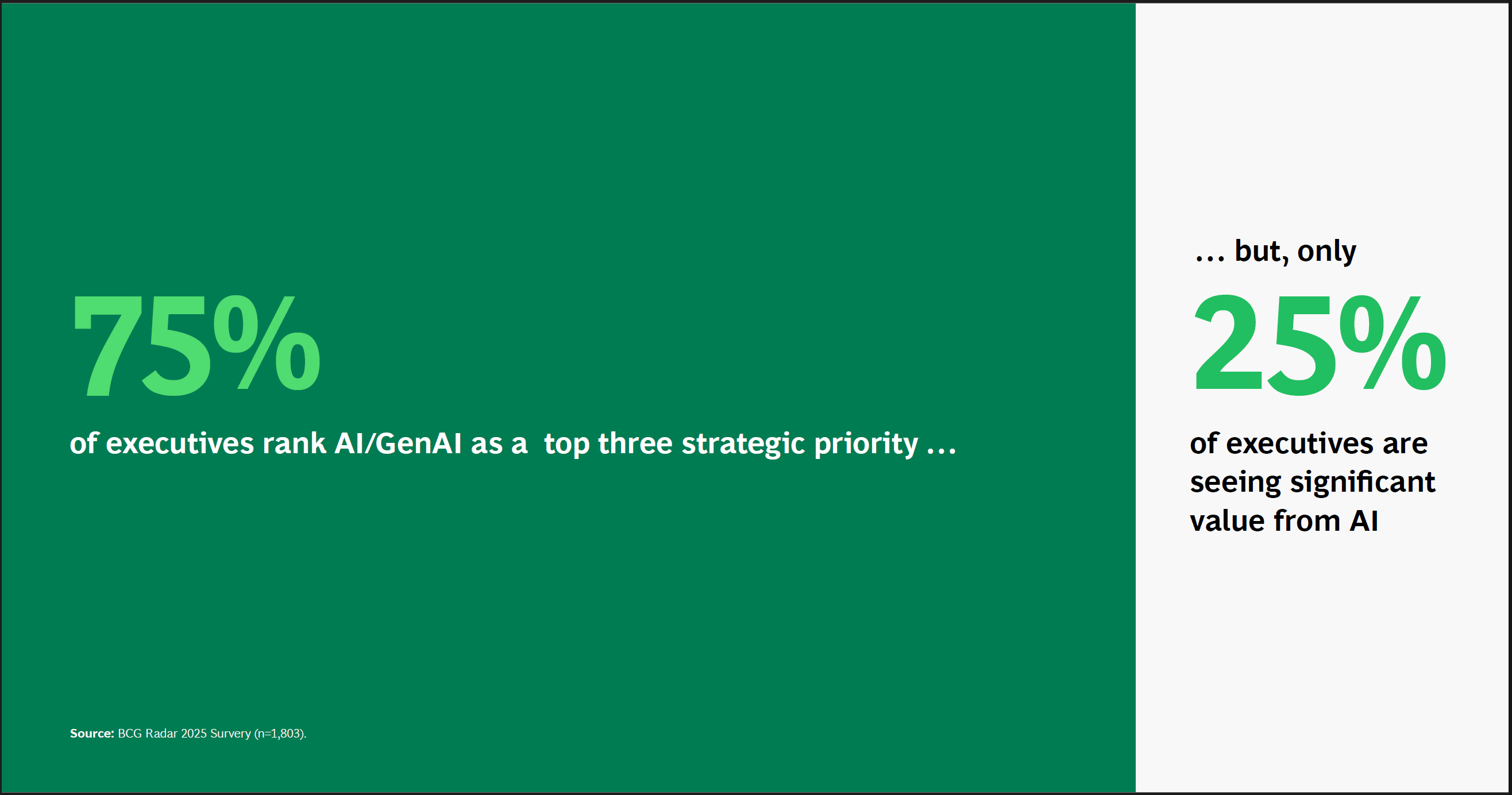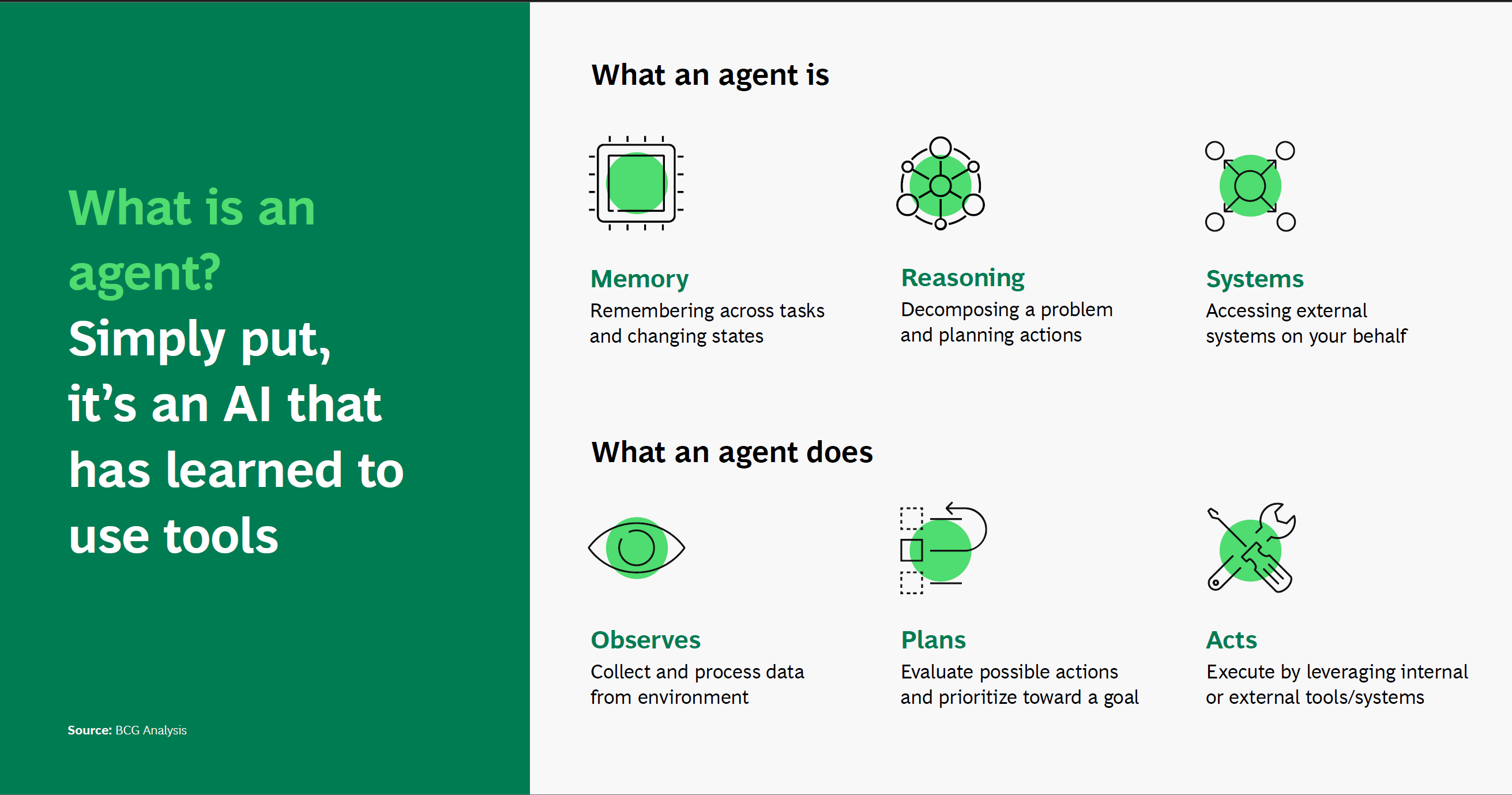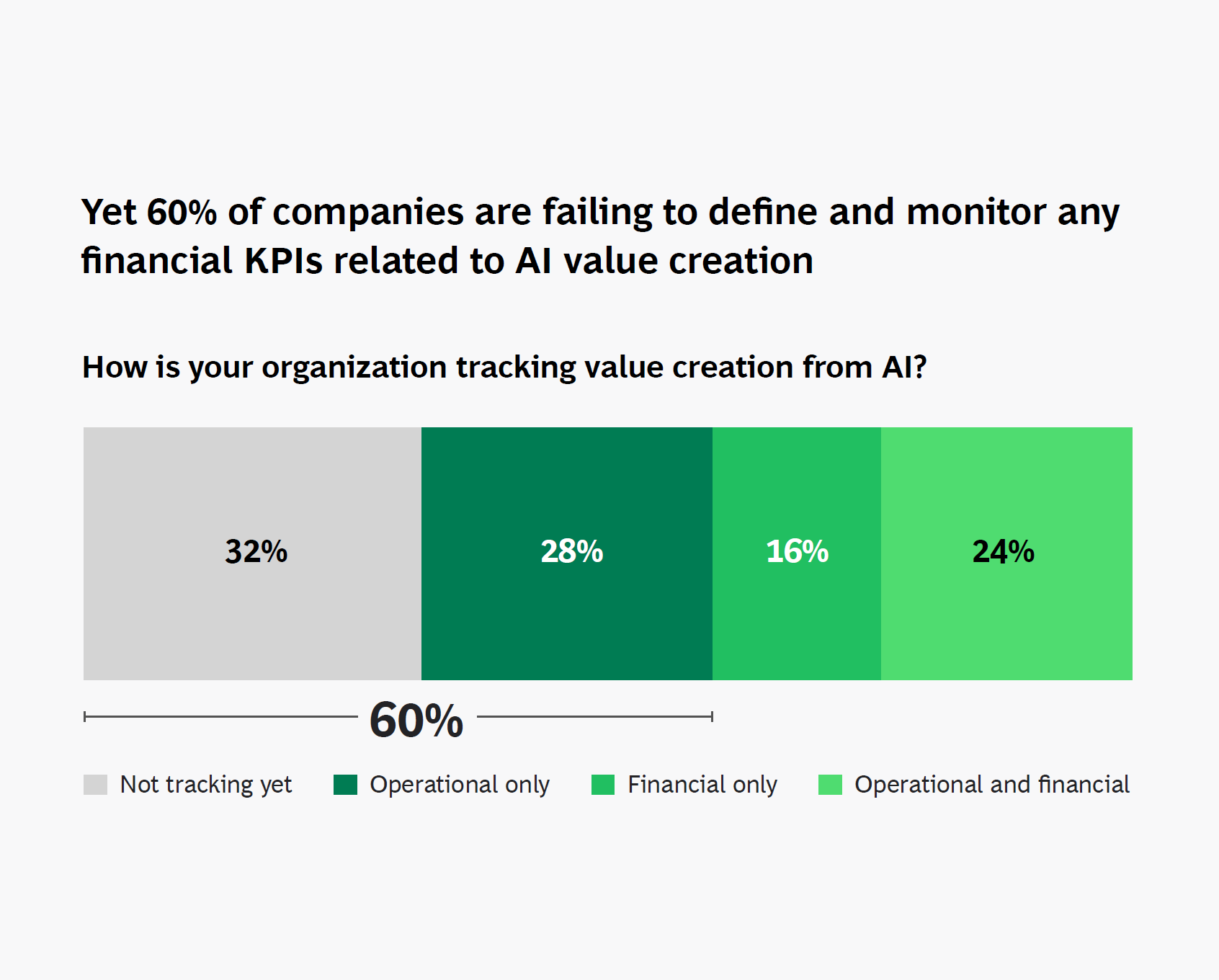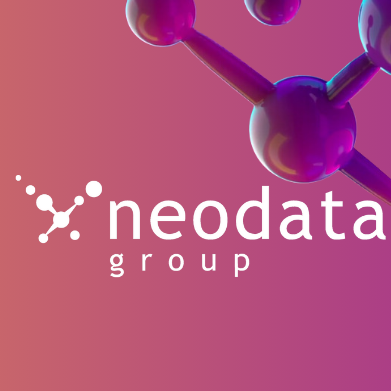Table of Contents
- The Gap Between AI Ambitions and Results
- Where Does the Real Value of AI Lie?
- AI Agents: An Accelerator of Business Value
- The Impact of AI on the Workforce
- The Lack of Financial KPIs: A Barrier to AI Success
- Conclusion
Many companies have started investing in AI, but only a few have succeeded in turning these ambitions into tangible results. According to BCG’s AI Radar 2025 report, while industry leaders leverage AI to transform key business functions and launch innovative products, most organizations struggle to generate real impact. The result? A growing gap between expectations and actual value.
The Gap Between AI Ambitions and Results
One of the main challenges is how companies approach AI. While 75% of executives consider AI a strategic priority, only 25% manage to translate this ambition into significant value. Many organizations focus primarily on deployment, spreading resources across numerous pilot projects. This fragmentation inevitably leads to lower returns on investment, preventing businesses from fully harnessing AI’s potential.

By contrast, leading companies take a more focused approach. They invest in high-impact initiatives, use AI to reshape critical functions, and create new products and services. Their strategy includes clear objectives and continuous tracking of revenue and profits, maximizing returns on investment.
Where Does the Real Value of AI Lie?
AI offers much more than just productivity improvements. Its greatest potential lies in its ability to radically transform business functions and drive significant innovation. According to the report, AI’s value can be divided into three key areas:
- Productivity Boost
AI can be integrated into daily operations, leading to productivity gains of 10% to 20%. This effect is particularly evident in repetitive or administrative processes, where automation reduces execution time and improves resource allocation. - Efficiency and Effectiveness
Restructuring critical activities can enhance efficiency and effectiveness by 30% to 50%. This includes optimizing decision-making, resource management, and the ability to respond swiftly to market needs. - Innovation and Competitive Advantage
AI is not just a tool for improving existing processes; it is a driver of innovation. It enables the development of new products and services, securing long-term competitive advantages—especially in fast-evolving industries where continuous innovation is crucial for market leadership.
Leading companies follow the 10-20-70 principle: they invest 10% in algorithms, 20% in technology, and 70% in people and processes. This strategy highlights the importance of training teams, reorganizing workflows, and sustainably integrating AI.
AI Agents: An Accelerator of Business Value
Another key insight from the report is the role of AI agents. These advanced systems—capable of observing, planning, reasoning, and acting—are set to become a major source of value shortly. AI agents can boost business productivity and operational speed up to three times compared to traditional tools. Moreover, they enable seamless collaboration, making business processes more agile and efficient.

The Impact of AI on the Workforce
AI is reshaping the workforce, requiring new skills and redefining roles and organizational structures. Interestingly, only 8% of executives anticipate workforce reductions, while 17% foresee job growth due to the creation of specialized roles. The majority (68%) expect internal restructuring, introducing new roles to replace obsolete ones.
Despite this, 70% of companies have trained less than a quarter of their workforce on AI tools, exposing a significant skills gap—especially in countries like Italy. Today, AI is seen as a complement to human talent, with autonomous agents promising productivity increases up to three times compared to traditional tools.
The main challenges remain workflow management, upskilling, and security, with privacy and regulations requiring particular attention. The future of work will be based on human-AI collaboration, prioritizing skills, and innovation to maximize value.
The Lack of Financial KPIs: A Barrier to AI Success
Despite AI’s vast potential, many companies still fail to track the outcomes of their initiatives properly. A staggering 32% of organizations do not define or measure KPIs related to AI-driven value creation. This gap prevents businesses from fully understanding AI’s impact and optimizing future investments.

Conclusion
AI is a powerful lever for boosting productivity, driving innovation, and generating tangible business value. However, only companies with clear and focused strategies fully realize its potential. Investing in people, processes, and advanced tools is essential to bridging the gap between ambition and results.
Neodata is here to help you turn your AI ambitions into real success—guiding you every step of the way. Are you ready to take the next step?

Neodata AI Team
As Neodata, we provide data, insight, articles, and news related to AI and Big Data.
-
Neodata AI Team#molongui-disabled-link
-
Neodata AI Team#molongui-disabled-link
-
Neodata AI Team#molongui-disabled-link
-
Neodata AI Team#molongui-disabled-link